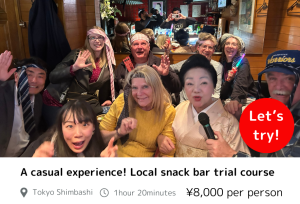Contents
What is Yakitori?

Yakitori, which translates to “grilled chicken,” is a popular Japanese dish consisting of bite-sized pieces of chicken skewered on bamboo sticks and grilled over a charcoal fire. The beauty of yakitori lies in its simplicity and the way it highlights the natural flavors of the chicken. It’s a staple in izakayas (Japanese pubs), street food stalls, and specialty yakitori restaurants.
\How about eating Yakitori at Izakaya with a fun guide?/
A Brief History of Yakitori
Yakitori has its roots in Japan’s Edo period (1603-1868), but it became widely popular in the early 20th century. Originally, the dish was considered a cheap and accessible form of food, often enjoyed by the working class. Over time, yakitori evolved, and today it is enjoyed by people from all walks of life. Its popularity has even spread beyond Japan, with yakitori restaurants opening in major cities around the world.
If you want to enjoy a tour of Japan's hidden alleyways, I recommend the "Snack Alley" tour.
The Art of Yakitori Preparation
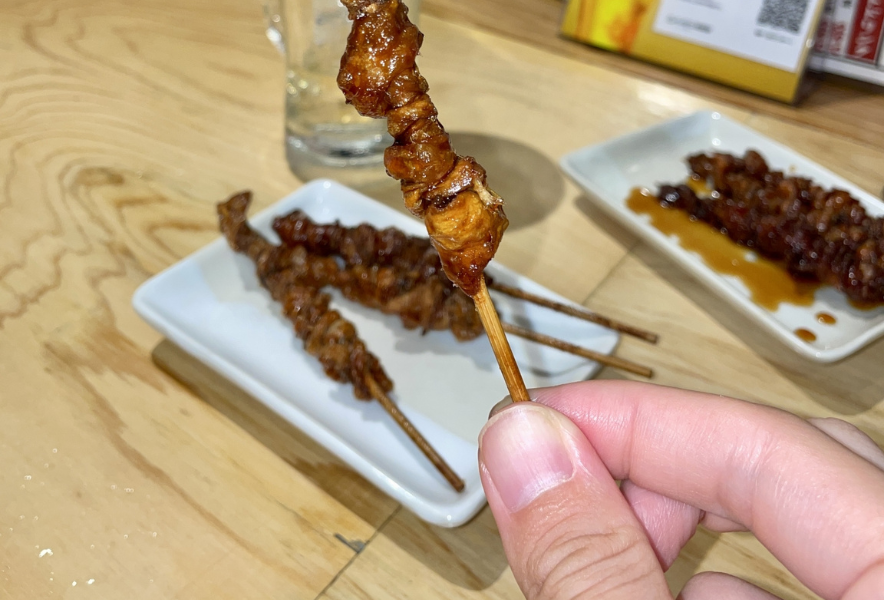
The preparation of yakitori is an art form. Here’s a look at the process:
- Selection of Chicken: High-quality, fresh chicken is essential. Different parts of the chicken are used, including thighs, breasts, wings, and even organs like liver and gizzard.
- Skewering: The chicken pieces are carefully skewered on bamboo sticks. The size and arrangement of the pieces ensure even cooking.
- Seasoning: There are two main ways to season yakitori:
- Shio (塩): Simply seasoned with salt. This method highlights the natural flavor of the chicken.
- Tare (タレ): Glazed with a sweet and savory sauce made from soy sauce, sake, mirin, and sugar. This gives the yakitori a rich, caramelized coating.
- Grilling: Yakitori is traditionally grilled over binchotan, a type of Japanese charcoal that burns cleanly and at high temperatures. The skewers are turned frequently to ensure even cooking and to achieve a perfect char.
Types of Yakitori
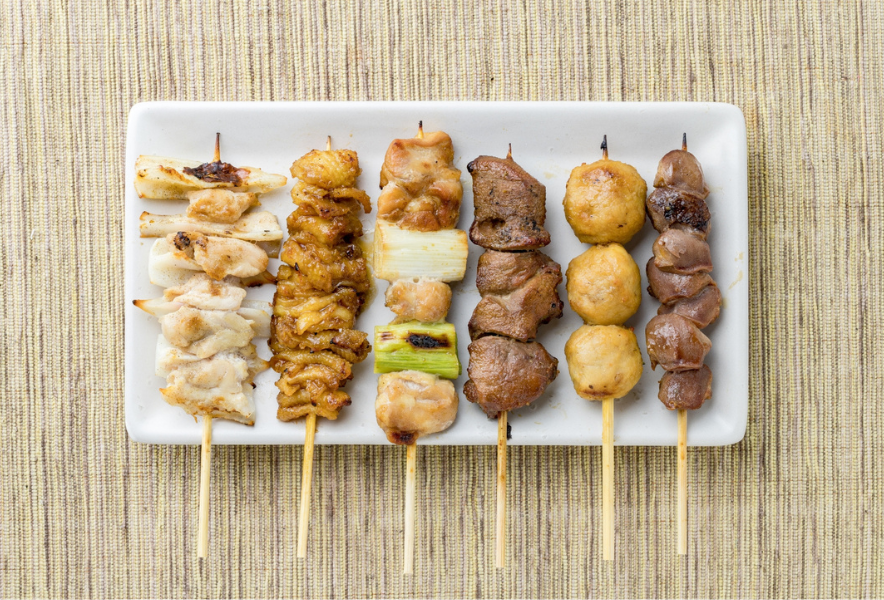
Yakitori comes in various types, each offering a unique taste experience. Some popular varieties include:
- Negima (ねぎま): Chicken thigh pieces alternated with scallions.
- Momo (もも): Juicy chicken thigh.
- Tsukune (つくね): Ground chicken meatballs, often mixed with vegetables and glazed with tare sauce.
- Reba (レバー): Chicken liver, rich and flavorful.
- Torikawa (とりかわ): Crispy chicken skin.
- Tebasaki (手羽先): Chicken wings, often seasoned with salt.
Kushikatsu: Deep-Fried Skewers
How to Enjoy Yakitori
Yakitori is best enjoyed hot off the grill, accompanied by a cold beer or sake. Here are a few tips for getting the most out of your yakitori experience:
- Order in Stages: Instead of ordering all at once, order a few skewers at a time to enjoy them fresh and hot.
- Try Different Cuts: Experiment with different types of yakitori to appreciate the variety of flavors and textures.
- Pair with Drinks: Yakitori pairs wonderfully with Japanese drinks like beer, sake, and shochu.
Japan’s Unique and Unusual food
Yakitori Culture
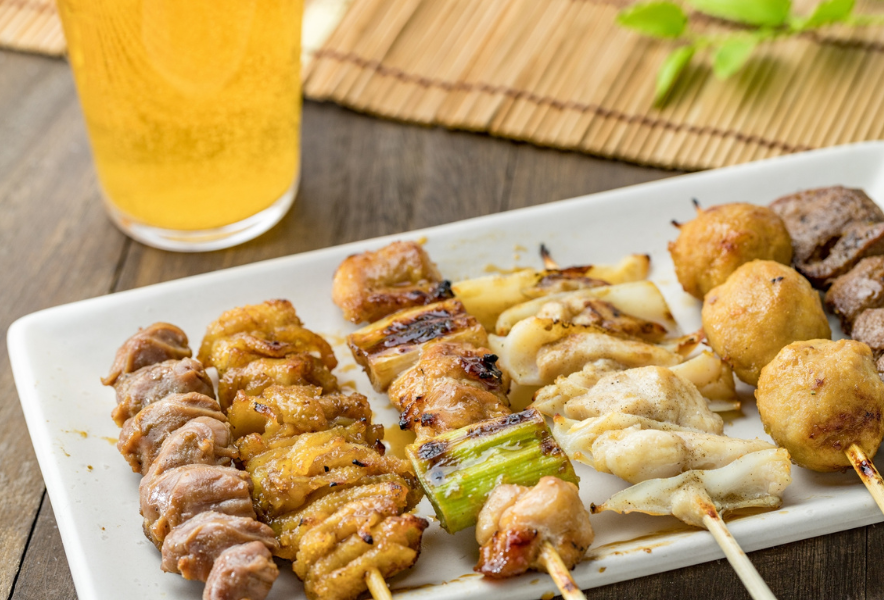
In Japan, yakitori is more than just food; it’s a social experience. Visiting a yakitori-ya (yakitori restaurant) or an izakaya is a great way to immerse yourself in local culture. These places are often lively and bustling, providing a perfect setting to relax, enjoy good food, and engage in conversation with friends or even strangers.
\We can try Yakitori with alcohol at Izakaya with a fun guide!!/
Yakitori is a true gem of Japanese cuisine, offering a delightful combination of simplicity and flavor. Whether you’re a seasoned food lover or a curious newcomer, trying yakitori is an experience that should not be missed. So next time you’re in Japan or at a Japanese restaurant, order a few skewers of yakitori and savor the taste of this traditional and beloved dish.
Let’s go to Izakaya and a Japanese Snack-bar with a fun guide!!
You can enjoy many kinds of food at Izakaya and drinking culture Snack Bars, beloved by many but you can’t enter without a guide. You can enjoy communication with the owner and other customers, as well as singing karaoke, allowing for a relaxing time.
Most snack bars have a policy of refusing entry to foreigners. However, with a tour, you’ll have a guide, so you can enter with peace of mind.
When visiting Japan, don’t just check off the tourist spots –
dive into local experiences for an unforgettable journey!
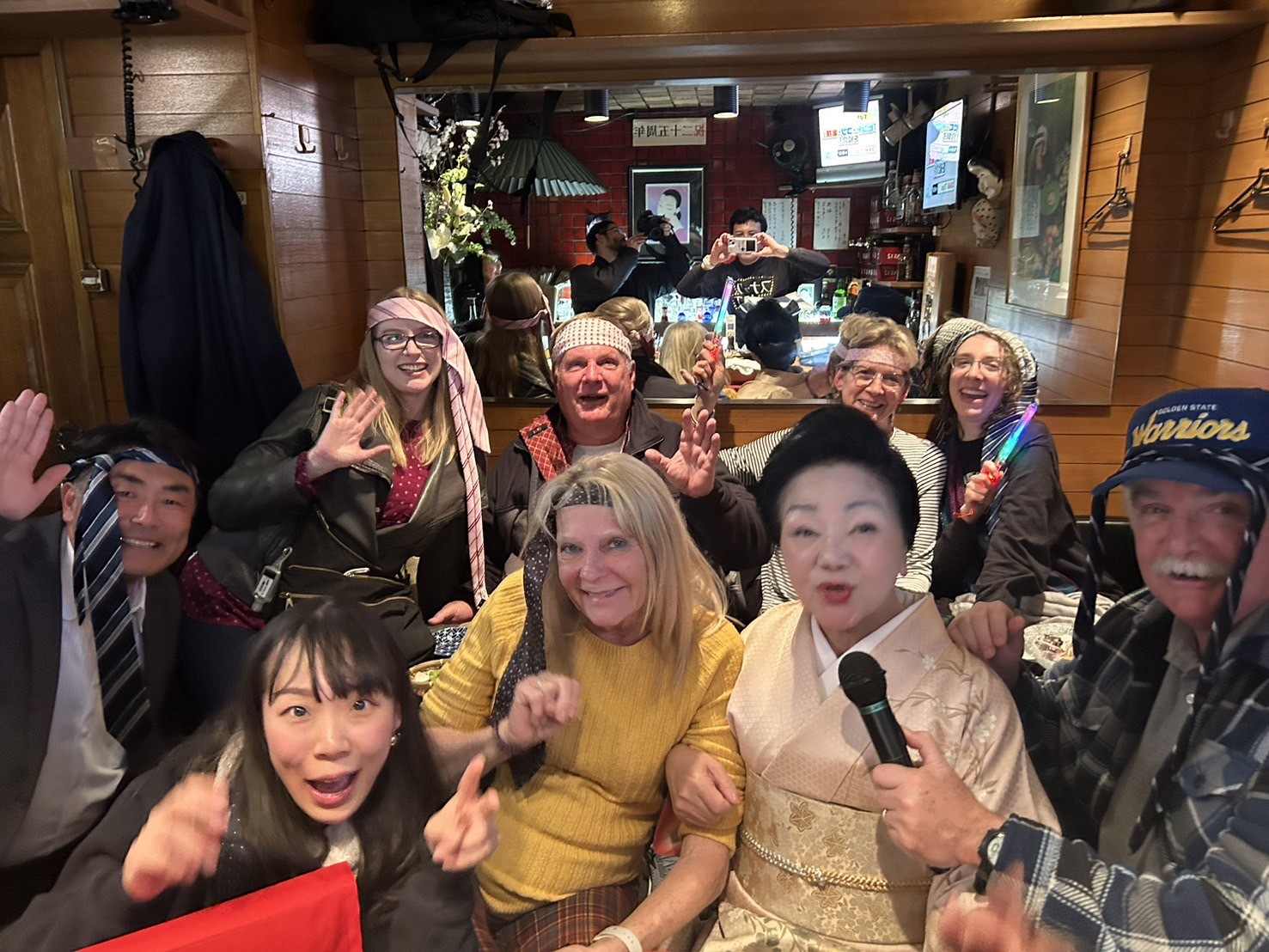
Once you experience it, you’ll be captivated too! The charm of snack bars.

New encounters with people! The camaraderie of singing at a snack bar! Conversations with the mama-san!



